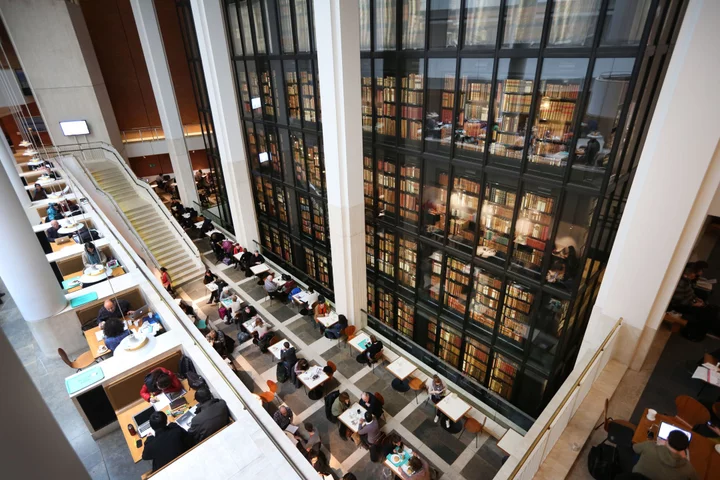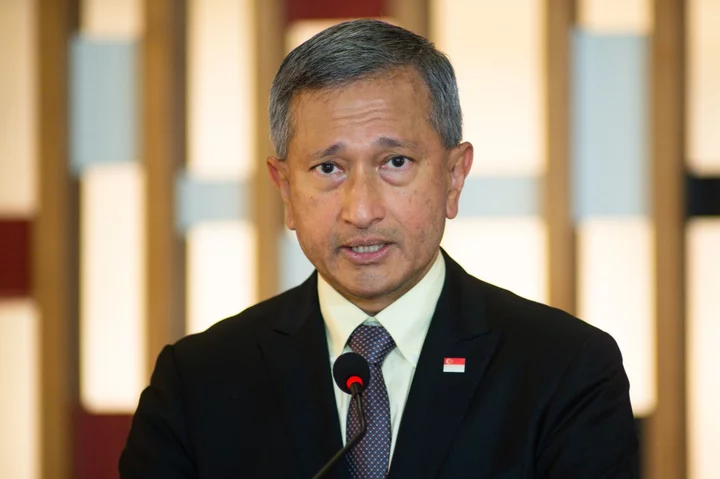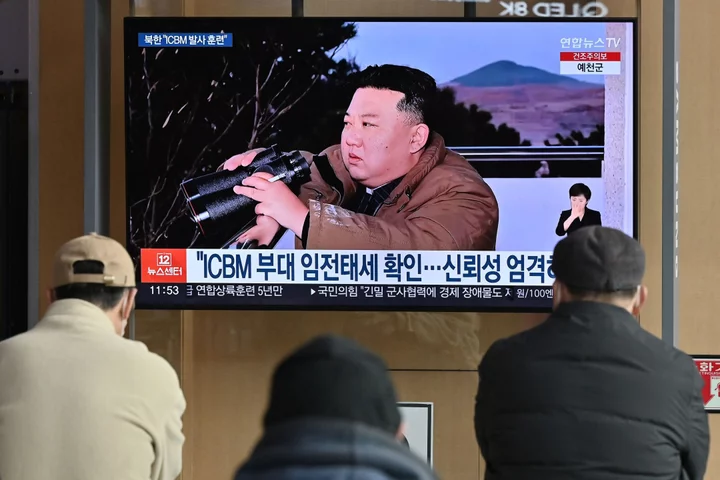The US and Australia reached an agreement to expand the US military footprint on the southern continent, as both countries bolster defense ties to respond to an increasingly assertive China.
The changes include more frequent and longer visits of US submarines to Australia, a regular rotation of US Army watercraft and collaborating on guided missile production, the nations’ defense ministers announced on Saturday in Brisbane.
Australian Defense Minister Richard Marles said the US-Australia relationship “has never been in better shape than it is right now” as he reeled off a list of efforts to enhance cooperation. Foreign Minister Penny Wong called the US Australia’s “closest strategic partner.”
The two countries also announced plans to further cooperate on space issues as well as step up integration of Japan into military planning.
“There’s been a strategic convergence between Canberra and Washington over the range of challenges that China poses,” said Charles Edel, Australia Chair at the Center for Strategic and International Studies in Washington. The relationship “has quickly evolved into one of America’s most important strategic partnerships.”
In a sign of the growing ties, US Defense Secretary Lloyd Austin and Marles are scheduled to view the largest-ever iteration of the biennial “Talisman Sabre” exercises off the northern coast of Australia on Sunday. More than 30,000 troops from more than a dozen countries will participate in the exercises, including a large contingent from the US.
Read More: Australian Army Helicopter Crash Interrupts Key Exercise With US
The exercises were paused after an Australian army helicopter crashed in waters off the country’s northeast coast late on Friday night. A search-and-rescue operation was underway for the four crew members who were on the MRH90, Marles said on Saturday, adding, “We desperately hope for better news.”
The exercises were expected to resume.
US Army Secretary Christine Wormuth said that the scale of the Talisman Sabre exercises was likely to have a “significant deterrent effect” on China as it considers whether it could take Taiwan by force.
“Being able to demonstrate that you can actually operate in combat with that number of allies and partners has a significant deterrent effect,” Wormuth said in an interview. “It wouldn’t be just the United States that would be involved in that conflict. It would likely be with our allies and partners.”
Australia and the US have significantly deepened their security ties since 2021 in the face of growing strategic competition between Washington and Beijing. While China is Australia’s largest trading partner by a substantial margin, Washington and Canberra have a long-standing alliance dating back to World War II. Both countries are also members of the Five Eyes intelligence-sharing alliance, along with Canada, New Zealand and the UK.
Why US and China Compete for Sway in South Pacific: QuickTake
In September 2021, Australia and the US joined with the UK to form a new security partnership known as Aukus, under which the British and American governments will help Canberra build and maintain a fleet of nuclear-powered submarines by the 2030s. Under Aukus, the three governments will also collaborate to step up their research efforts in areas of strategic importance, such as quantum computing and artificial intelligence.
Since the center-left Labor government took power in May 2022, Australia has also announced several major purchases of military equipment from the US valued at almost $10 billion, including 20 C-130J Hercules transport aircraft, 220 Tomahawk missiles and about 40 Black Hawk helicopters.
Speaking at a news conference in Brisbane on Saturday following the meetings, Austin said the US was planning to establish the region as an area for “enduring logistics support.”
Austin said the US was committed to accelerating Australia’s access to “priority munitions” through a streamlined acquisition process. The US Secretary of Defense added he wanted to expand trilateral cooperation between the US, Australia and Japan, including F-35 training.
The US and Australia have also stepped up their diplomatic efforts in the Pacific in the past 12 months, following the shock announcement in April 2022 that the Chinese government had signed a security agreement with the Solomon Islands.
What’s the ‘Quad’ and Should China Fear It?: QuickTake
As a result, US and Australian diplomats, including Secretary of State Antony Blinken and Foreign Minister Wong have increased the regularity of their visits to the region. Speaking at the opening of a new embassy in Tonga on Wednesday, Blinken accused the Chinese government of “increasingly problematic” behavior in the region, including allegations of “predatory economic activities.”
Austin also paid a visit to a Pacific island nation on his way to Australia, becoming the first US defense secretary to visit Papua New Guinea.
In the capital, Port Moresby, Austin and Papua New Guinea’s Prime Minister James Marape hailed the two countries’ new Defense Cooperation Agreement as a sign of increasingly close ties between the nations. The agreement will bolster security cooperation between the two countries, including training opportunities for Papua New Guinea’s military and humanitarian relief efforts.
Not everyone is convinced by the sudden spurt of US interest in the region.
Winnie Kiap, Papua New Guinea’s former High Commissioner to the UK, said many of her fellow citizens feel “baffled” by the increased foreign engagement with the country.
The worry, Kiap added, is that the security conversations appear to bypass the needs and interests of average Papua New Guineans. “It’s like watching two elephants playing,” she said. “What happens to the patch of grass they’re playing on?”
--With assistance from Angus Whitley.
(Updates with Austin’s remarks in Brisbane starting in 14th paragraph.)









